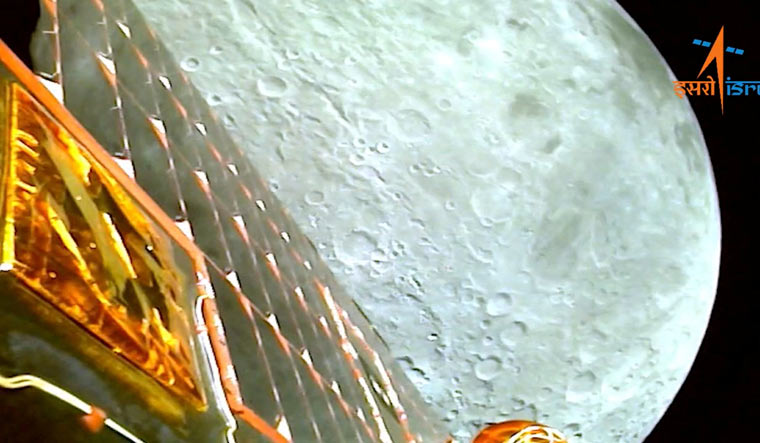India is all set to script history by becoming the first nation to reach the uncharted south pole of the moon as Chandrayaan-3's Lander Module (LM) will make a touchdown near the south polar region of the satellite on Wednesday.
The LM, comprising the lander (Vikram) and the rover (Pragyan), is expected to soft-land on the moon at 6:04 pm. This is ISRO's second attempt at the same after Chandrayaan-2 lander 'Vikram' crashed into the lunar surface following anomalies in the braking system in the lander on September 7, 2019.
The success of the Chandrayaan-3 mission will also make India the fourth country to master the technology of soft-landing on the lunar surface after the US, China and the erstwhile Soviet Union.
The Rs 600-crore Chandrayaan-3 mission was launched on July 14 onboard Launch Vehicle Mark-III (LVM-3) rocket, for a 41-day voyage to reach near the lunar south pole. The LM will now await the sunrise at the designated landing site for the descent, which is expected to be initiated at around 5:45 pm on Wednesday.
The ISRO on Tuesday confirmed that the Chandrayaan-3 mission is on schedule. "Systems are undergoing regular checks. Smooth sailing is continuing," it said. A senior ISRO chief had also stated how the landing would be delayed by four days to August 27 if any health parameter of the LM was found abnormal.
Soft landing
The LM will enter the powered braking phase at around 30 km altitude before the touchdown. It then will begin to use its four thruster engines by "retro firing" them to reach the surface of the moon, by gradually reducing the speed. This is to ensure the lander doesn't crash, as the moon's gravity will also be in play.
On reaching an altitude of around 6.8 km, only two engines will be used, shutting down the other two, aimed at giving the reverse thrust to the lander as it descends further, according to the ISRO.
As it reaches an altitude of about 150-100 metres, the lander using its sensors and cameras, would scan the surface to check whether there are any obstacles and then start descending to make a soft landing.
ISRO chairman S Somanath had recently said the most critical part of the landing will be the process of reducing the velocity of the lander from 30 km height to the final landing, and the ability to reorient the spacecraft from horizontal to vertical direction. "This is the trick we have to play here," he said.
"The velocity at the starting of the landing process is almost 1.68 km per second, but (at) this speed (the lander) is horizontal to the surface of the Moon. The Chandrayaan-3 here is tilted almost 90 degrees, it has to become vertical. So, this whole process of turning from horizontal to vertical is a very interesting calculation mathematically. We have done a lot of simulations. It is here where we had the problem last time (Chandrayaan-2)," Somanath explained.
After the soft landing, the rover will descend from the lander's belly, onto the Moon's surface, using one of its side panels, which will act as a ramp.
(With inputs from PTI)


